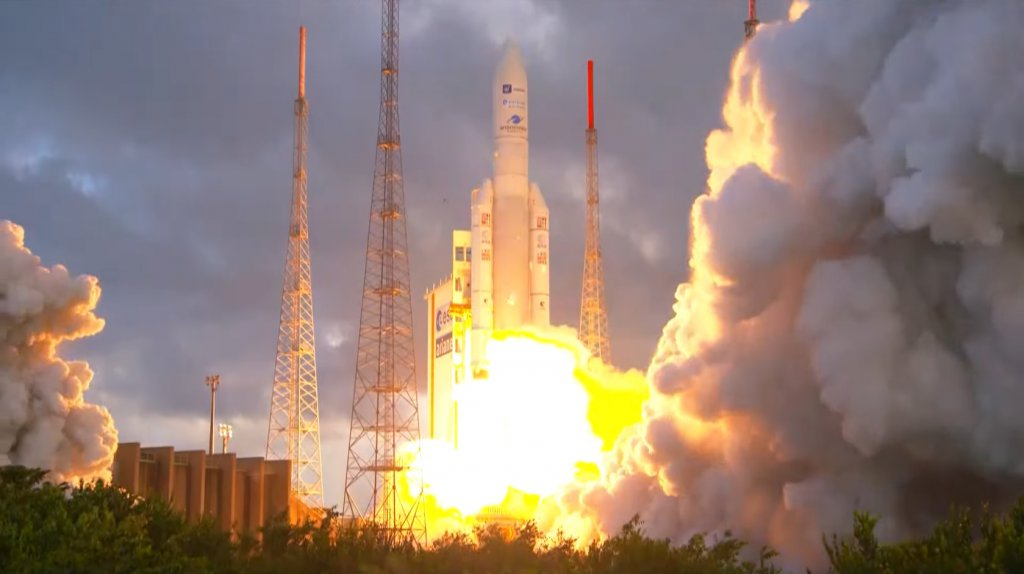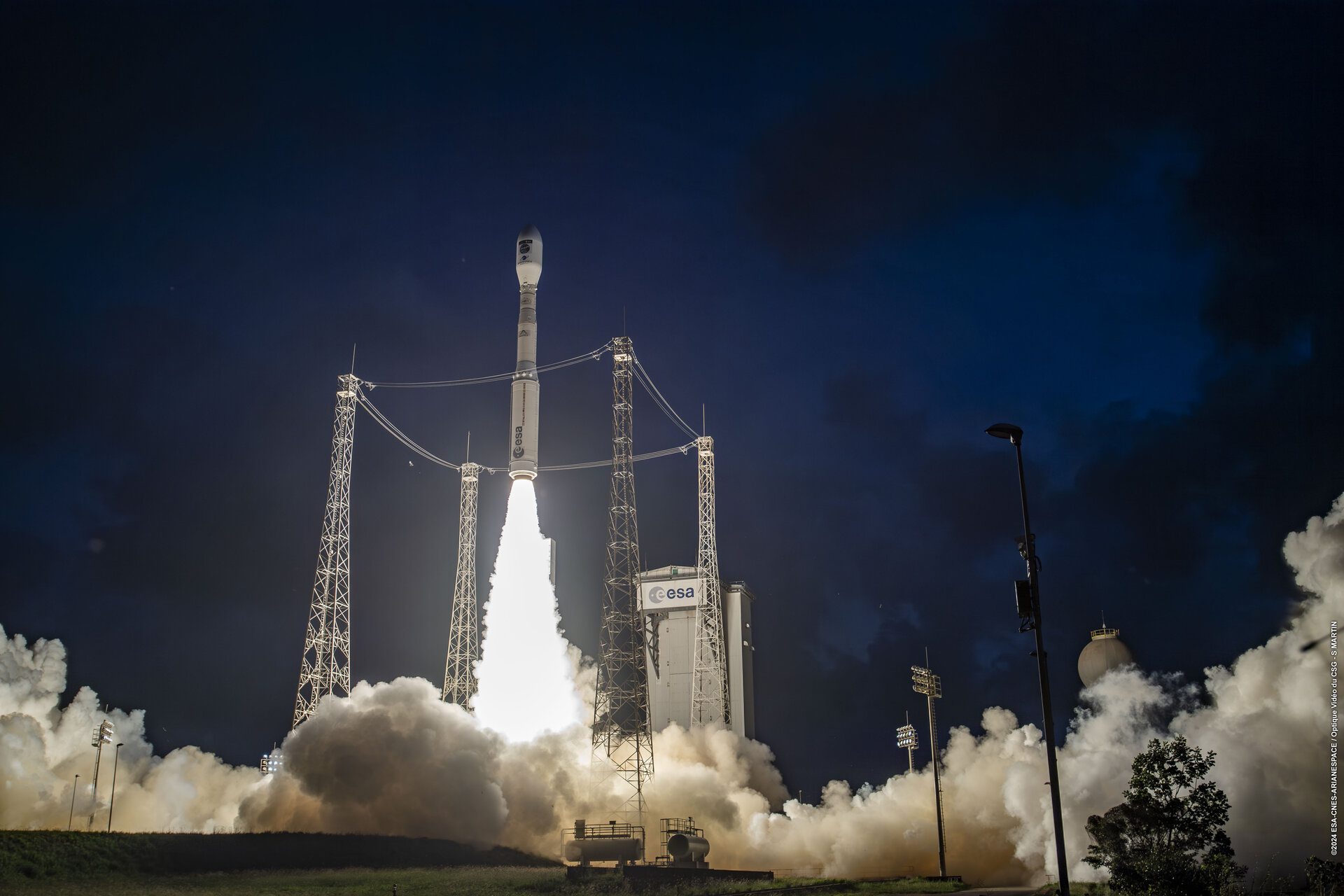Following a gap of almost a year the European heavy-lift launcher Ariane 5 has launched from Kourou, French Guiana. The mission which lifted-off at 2100 GMT on 30 July, placed the Eutelsat Quantum and Star One D2 satellites into a Geostationary Transfer Orbit (GTO). From their drop-off at circa 200 x 35,600 km at 3 degrees inclination these two satellites will now propel themselves into a Geostationary orbit.
Launch provider Arianespace reported a total payload mass of 10,515 kg for the mission of which the Eutelsat satellite, Eutelsat Quantum, accounted for 3,461 kg and the larger Embratel Star One unit was 6,190 kg.

A still from the launch of the Ariane 5 rocket lifting-off with its two payloads. Courtesy of Arianespace
This launch represents the first of two planned Ariane 5 missions before the anticipated launch of the multi-billion dollar JWST (James Webb Space Telescope), now expected in November. The Ariane 5 flight programme had been paused since last year as Arianespace investigated an issue with its RUAG-supplied fairings which had undergone a redesign. During two missions in 2020 it seemed that fairing separation caused increased levels of vibration in the payload stack. Whilst this did not affect any of the satellites carried the decision to pause flights and resolve it was taken to ensure the safety of future payloads (especially the upcoming JWST).






